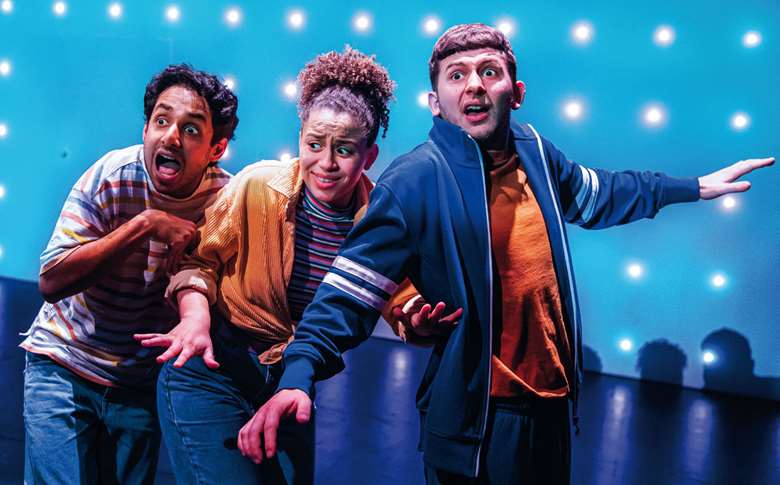Practitioner Focus: Unicorn Theatre
Paul Bateson
Friday, May 1, 2020
Paul Bateson introduces some practical ideas for exploring the style and ethos of Unicorn Theatre's productions

TRISTRAM KENTON
Background
‘The Unicorn is a professional theatre dedicated to producing inspiring and invigorating work for young audiences.’ Described by The Stage as ‘warm, witty, and wonderfully imaginative,’ Unicorn have been making theatre specifically for children and young people in one form or another for over 70 years.
In the time since Carole Jenner formed first ‘Mobile Theatre’ in 1946, touring plays for children into rural areas, through ‘Unicorn Theatre Club’ taking a theatre lease in London, to the present day Unicorn Theatre in Southwark; this company have been providing quality theatre experiences for young audiences. Part of their mission is to ‘invite children, families and carers from all cultures into a conversation about art and the world we live in’ and this is more than apparent in the breadth of work they stage, and their extensive programme in schools, the community, and in online resources.
From Baby Show aimed at audiences just 6–18 months old, to Anansi the Spider for 3–7 year-olds; through re-workings of traditional tales such as Icarus, Grimm's Tales, and Aesop's Fables, classic stories such as The Iron Man and The Velveteen Rabbit, to versions of Oscar Wilde and Brecht plays, and a new Tim Crouch production based on an obscure Shakespeare character – Cinna the Poet – Unicorn have the young people's market covered, taking well known stories and remaking and reimagining them for the now.
Key features of Unicorn Theatre
- Theatre for all young people
- Traditional and classic stories re-made, retold and re-imagined for today
- Imaginative storytelling ensemble theatre
- Interesting and inventive use of props
- Direct address/narration
- Puppetry
- Mime and motif
- Projection and light
- Music and song
Unicorn Theatre's playful storytelling style makes a great practitioner study for students at GCSE. Using these key features in adapting existing stories is a nice stepping stone to original devising too. It is also worth looking into Unicorn as an example of work for a specific target audience, for any work that requires a brief, such as BTEC Tech Award Component 3.
Exercise 1: Choral narration/Direct address
Using the opening to Unicorn production The Bee in Me as stimulus, in a pair, one person narrates while the other person mimes the morning routine of a child in their bedroom. The level of detail should be interesting and engaging but the scene should remain mundane. In the story the child is being neglected so the action should hint at this. Narration techniques to explore are detailed description, audience interaction, biased/opinionated narrator, narrator movement and narrator involvement in the action; such as handing a hair brush or moving the actor to the mirror.
To develop this idea, now three narrators should all narrate the routine. The actors should aim to share the lines using unison and echo, and share mirrored movements. The narrators can each present a different attitude to the action, one being sympathetic, one being non-plussed or accusatory, and so on.
Exercise 2: Using props inventively
As a whole group, take an everyday object and pass it round the circle demonstrating different uses for the prop. For example a sweeping brush becomes a fishing rod, a microphone, a walking stick, a metal detector. Actors should make a short mime and introduce; ‘this is a…’
To develop this idea, in small groups actors are to create a short scene using one prop in as many different ways as they can. Suggested objects can be sheet of fabric, suitcase, chair, two hula hoops and so on.
Exercise 3: Puppetry
Unicorn productions often use puppetry. Students can watch clips from their version of The Iron Man to get an idea.
Watch the NT tutorial (www.youtube.com/watch?v=ReGB6Bmy9rc) on making basic paper puppets and have students play with making characters by experimenting with how the puppets move and sit.
Using a shirt or a suit jacket as a puppet works too, where one person holds the neck and one arm and another person holds the lower back and another arm. Even sock puppets or balloons on a stick can be presented as characters.
Develop this idea by giving students a famous character to re-create as a puppet, maybe The Iron Man himself, perhaps Mrs Trunchbull or Inspector Goole. Students can add narration to introduce them and dialogue as the character.
Exercise 4: In the style of Unicorn
In small groups, approach all of, or a short extract from, a classic text; experiment with bringing it alive in any space for a young audience using the key features of Unicorn. Potential adaptations could be any story. Consider: The Selfish Giant by Oscar Wilde, The Wonderful Man by Edward Monckton, any Roald Dahl story, Sherlock Holmes, any fairytale or fable, Shakespeare or Greek myths.

